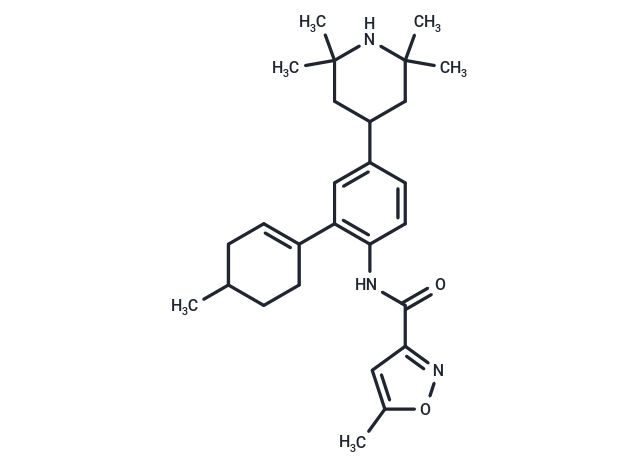Shopping Cart
- Remove All
 Your shopping cart is currently empty
Your shopping cart is currently empty

CSF1R-IN-23 (Compound 7dri), a selective colony-stimulating factor-1 receptor (CSF1R) inhibitor, exhibits an IC50 of 36.1 nM. This compound acts as an antineuroinflammatory agent in a mouse model and is noted for its blood-brain barrier (BBB) permeability [1].

| Pack Size | Price | Availability | Quantity |
|---|---|---|---|
| 10 mg | Inquiry | 10-14 weeks | |
| 50 mg | Inquiry | 10-14 weeks |
| Description | CSF1R-IN-23 (Compound 7dri), a selective colony-stimulating factor-1 receptor (CSF1R) inhibitor, exhibits an IC50 of 36.1 nM. This compound acts as an antineuroinflammatory agent in a mouse model and is noted for its blood-brain barrier (BBB) permeability [1]. |
| In vitro | CSF1R-IN-23, at concentrations of 0-10 μM for 30 minutes, inhibits CSF1R autophosphorylation in RAW264.7 cells and microglial cells EOC20 without significant cytotoxicity [1]. Western Blot Analysis [1]. Cell Line: EOC20 and RAW264.7. Concentration: 0-10 μM. Incubation Time: 30 min. Result: Inhibited phosphorylation of CSF1R. |
| In vivo | CSF1R-IN-23, administered at 0.5 mg/kg via intraperitoneal injection every two days for a total of four doses, can ameliorate neuroinflammation induced by lipopolysaccharide in the C57BL/6J mouse model [1]. In this model, 76% of microglia in the hippocampus, cortex, and thalamus are eliminated. Animal Model: LPS-induced neuroinflammation in C57BL/6J mice [1]. Dosage: 0.5 mg/kg. Administration: i.p., every two days for four doses. Result: Eliminated 76% of microglia in hippocampus, cortex, and thalamus. |
| Molecular Weight | 435.6 |
| Formula | C27H37N3O2 |
| Cas No. | 2935480-17-2 |
| Storage | Powder: -20°C for 3 years | In solvent: -80°C for 1 year | Shipping with blue ice. |

Copyright © 2015-2025 TargetMol Chemicals Inc. All Rights Reserved.